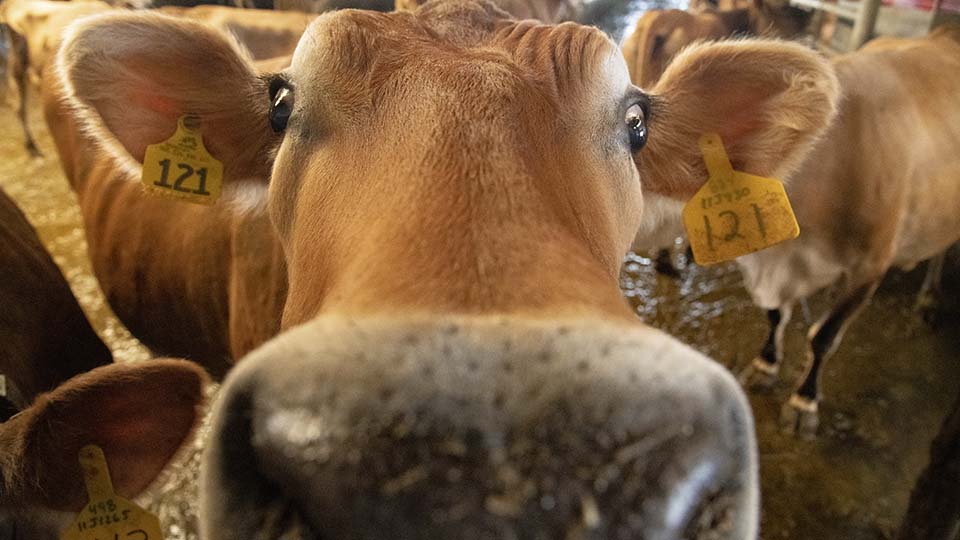Dairy

Practice: Install floors that divert urine away from feces to reduce ammonia emissions
J. Mark Powell, Tom Misselbrookand Glen Broderick. 2006. Abating Ammonia Emission from Dairy Barns Through Feed, Herd and Bedding Management. Workshop on Agricultural Air Quality, page 1006.
Conclusions
Substantial reductions in ammonia loss from dairy farms can be achieved by reducing in-barn losses, by covering manure storage, and by incorporation of manure in the field. The following steps can be a guide for action:
- Remove excess protein from the cow’s diet. This normally saves on feed cost, as well as reducing ammonia N emissions.
- For new construction, floors that divert urine away from feces can reduce ammonia emissions. Slatted floors facilitate this, but there is still considerable loss of ammonia from the surface of the slatted floor.
- Select bedding (e.g. sand, pine shavings) that separate feces and urine, which reduce ammonia losses.
- Cover the manure storage. When organic bedding such as straw is used, a crust will form on the surface of the slurry pit. This reduces ammonia N losses and odors. Excessive agitation during unloading of the slurry from storage should be avoided.
- Incorporate manure in the field. However, this strategy needs to consider potential tradeoffs in situations where nitrate leaching may be a concern.
Practice: Select bedding (e.g. sand or pine shavings) that separates feces and urine
J. Mark Powell, Tom Misselbrook and Glen Broderick. 2006. Abating Ammonia Emission from Dairy Barns Through Feed, Herd and Bedding Management. Workshop on Agricultural Air Quality, page 1006.
This practice is the placement of manure slurry (manure of 8% to 15% solids) beneath the soil surface with a minimum of mixing or stirring of the soil. Injection of slurry will reduce ammonia emissions, odor, and the potential for flies. The nitrogen value of the slurry will be 15% to 40% greater than if the manure was not incorporated. The application rate of slurry should not exceed the nutrient management plan recommendation.
Adapted from a University of Idaho bulletin CID 1138 “Dairy Ammonia Control Practices” by Ron E. Sheffield and Bruce Louks to assist dairy farmers in understanding the requirements of the Idaho Department of Environmental Quality’s “Rules for the Control of Ammonia from Dairy Farms” (IDAPA 58.01.01.760 - 764))

